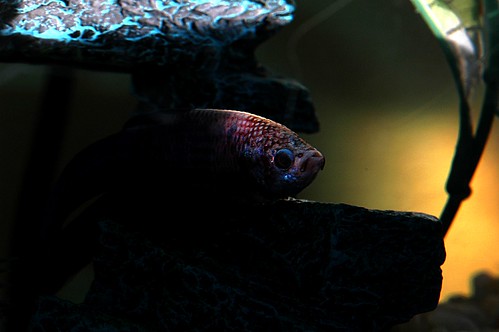Q: TL wrote,
I recently heard that seeding your tank with gravel from another tank will help the cycling process go faster. Is this true and is there anything special I have to do to seed it?
A: When we cycle our aquariums we grow and sustain cultures of nitrifying bacteria, which will live in the tank and consume harmful toxins caused by fish waste making the water safe for aquatic life. This is a naturally occurring process that, when conditions are met, will happen in the tank regardless of whether or not the aquarist observes it. During the cycling process there can be extreme increases in ammonia and nitrite toxicity. Because of this increase it is preferable to monitor the cycle and make necessary adjustments rather then letting it happen unmonitored. One thing that we can do to dramatically speed up the biological cycle is to seed our tanks with nitrifying bacteria from an outside source.
When we cycle a tank naturally we take the very small number of bacteria already present and feed them (ammonia) until the bacterial colonies grow large enough to consume the ammonia as fast as it is being produced. This usually takes about four to six weeks to happen naturally. By adding outside bacteria we are jump starting the process and often significantly decreasing the overall cycle time. Seeding the tank can reduce the overall cycling time to as little as a few days. Some have even claimed to cycle tanks in less than 24 hours.
There are two basic methods for seeding an aquarium.
1. Introducing bacteria-laden media from an established tank. When we cycle our aquarium the nitrifying bacteria attach themselves to all surfaces of the tank. They are most prevalent in the filter media. The undisputed best method for seeding an aquarium is to take the filter bag from a well established aquarium and to add it to your uncycled aquarium. Some larger HOB (Hang on Back) filters have multiple slots available for filter bags so you can add your clean filter bag as well as one from another tank. The second place nitrifying bacteria are most prevalent is in the substrate itself. It is also found on the tank walls and decor but for best results collect either the filter bag or substrate. Obviously, the more substrate you add the more bacteria will make it into your new tank but usually about a 1/2 cup [120 ml] will suffice. You can either add it directly into your substrate or pour it into the foot of a pair of pantyhose, cut off the rest, knot the top and place it inside the aquarium until the tank is fully cycled. When the tank is well established you can remove the substrate, pantyhose and all, and discard. This is especially useful if your seeding material is of a color scheme you find less desirable. A WARNING: Seeding your tank with water from an established aquarium is not a suitable method of seeding. Very little nitrifying bacteria are present in open water so adding just water from an established tank will not produce effective results.
The downside to seeding with media from an established tank is finding the material. Friends and aquarium clubs are great resources. Some local fish stores may give you gravel from their existing tanks but often stores have policies against this, particularly larger chains. Still, it doesn’t hurt to ask.
2. Bacteria in a bottle. As aquarists become more cycle-savvy, manufacturers have found ways to cash in by bottling nitrifying bacteria. Unfortunately, the majority of products available are completely useless and not worth the money. Some, however, have been known to successfully cut cycle time. You want to find products that contain the bacteria Nitrosomonas and Nitrobacter or Nitrosospira and Nitrospira responsible for the cycling process. Avoid products that are unrefrigerated or don’t have an expiration date. Remember, you’re adding large cultures of these bacteria to your tank, which require ammonia and nitrite as food. Healthy cultures of beneficial bacteria do have a shelf life. I recommend Bio-Spira made by Marineland which you can find in the refrigerators of many local fish stores. The downside to bacteria in a bag is the cost. For something that occurs naturally, to buy it at the store you can pay upwards of $30 or more and results can be inconsistent.

I just bought SOm Bio-Spira today. It comes in smaller quantities, suitable to treat up to 30 gallons and only cost me $12. Much more affordable, and it came highly recommended from the guy at the store. The guy also agreed with you that most of the cycling aid products don’t work